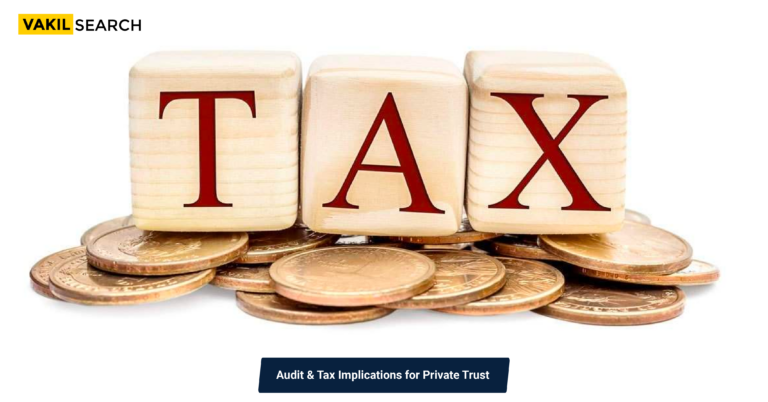Trusts are created to provide the trustor's Asset with legal protection. We will go into detail regarding the checklist & procedure for trust Enrollment in India in this blog.
Overview:
Trusts are created to provide the trustor’s Asset with legal protection. Whether a trust is public or private, it aids in ensuring that the assets are dispersed in accordance with the trustor’s wishes. We will outline the documents required for trust enrollment in this blog.
What is a Trust?
A trust is defined as an obligation attached to the ownership of property and growing out of a confidence reposed in and accepted by the owner or declared and acknowledged by him, for the benefit of another and the owner, according to Section 3 of the Indian Trust Act 1882. Simply explained, trust is nothing more than the transfer of property from the owner (Settler) to a third party (Trustee) in whose favour the owner has faith (Beneficiary). The property should be formally transferred from the Settler to the Trustee by the Settler.
Trust is a means of meeting the needs of the less fortunate. There is a common misconception that only the wealthy should establish trusts. However, this is not true; regular people like you and me may establish Trust. Additionally, trusts are divided into two groups: public trusts and private trusts. The Indian Trust Act of 1882 only applies to private trusts. Public Trusts, on the other hand, are often managed by state-specific legislation. It should be noted that Jammu & Kashmir and the Andaman and Nicobar Islands are exempt from the Indian Trust Act’s provisions.
We will go into detail regarding the checklist for trust enrollment and the procedure for trust Enrollment in India in this blog.
Parties Involved in the Formation of a Trust
- A Settler – This person establishes a trust by transferring an asset they own to the trust. A settler is often referred to as a grantor or a trustee.
- A Trustee – This person manages the assets on behalf of the beneficiary. The Trustee is fully responsible for the trust’s assets and has a legal duty to take the best care of them for the benefit of the beneficiaries. Legal restrictions prevent the Trustee from utilizing the trust asset for personal gain.
- Beneficiary – The third person who benefits from the assets maintained and managed by the Trustee is known as the Beneficiary. A sufficiently specified group of people (for example, “all children and grandkids”) may be the beneficiary or beneficiaries, depending on who is mentioned in the trust deed.
Types of Trusts
There are 2 types of trusts –
- Public Trust – For the benefit of the whole public or a specific class of persons, public trust is established. As a result, the entire public as a whole is the Public Trust’s beneficiary. Public Trust is further divided into two categories Public Religious Trust and Public Charitable Trust.
- Private Trust – A private trust is one that the settlor establishes for the benefit of one or more specific people who serve as the trust’s beneficiaries. Therefore, a private trust has families or people as beneficiaries. For instance, trust is established for the Settler’s family and friends.
Documents Required for Trust Registration
- The “Trust Deed” is the most significant document for Trust Registration. It outlines the primary goals for which the Trust was established. A trust deed, which specifies the trust’s rules and regulations, serves as legal proof of the trust’s existence. In the presence of two witnesses, the Deed is signed. The Trust Deed contains a list of all the rules and guidelines about the management of the Trust
- Identity documents like a passport, driver’s license, Aadhaar card, or voter ID are examples.
- Passport-size photographs of each trust deed.
- Aadhaar Cards for each Trust party.
- PAN Card of each Trust party.
- Evidence of the registered office address with a water or electricity bill.
- Schedule (registration application attest with a court fee INR 100)
- Declaration signed by all trustees.
- With a court fee of INR 10, the settler’s attested letter of permission.
- Certificate of No Objection (NOC) from the property’s owner (trustor).
- Signatures of the Settlor on each page of the Trust Deed
Steps for Trust Registration
-
Choosing a Name
Choosing a distinctive name for your Trust is the first stage in the Trust enrollment steps. The chosen name must not contravene or infringe on the rights to another person’s name or trademark.
-
Choose the Trust’s Settlers and Trustees.
To establish a trust, there must be at least two trustees. The maximum number of trustees needed for a trust is unrestricted, nevertheless. The Settler must reside in India and is ineligible to serve as the trustee.
-
Making a Deed
A “Trust Deed” must be drafted in the following stage. The “Trust Deed” must be signed using the proper non-judicial stamp paper, the cost of which varies from state to state. The photocopy of the Trust Deed must have the Settler’s signature on each page. Additionally, the physical presence of the settlers, the two additional witnesses, and a form of identification are required at the time of registration. A Memorandum of Association should be written since it outlines the trustor and trustee’s relationship.
-
Registration of Trusts
The next stage is to present the “Trust Deed” to the registrar of the trusts with jurisdiction after you have completed the initial draught. The office of the sub-registrar handles the remainder of the trust registration process after receiving the deed and delivering it to the registrar.
-
Purchase the Registration certificate.
The registrar retains the original registered copy of the Trust Deed and returns the photocopy after receiving the Trust Deed from you.
Once all the requirements for the trust enrollment steps have been completed, the registration certificate is provided, which takes at least seven working days.
-
Create a Bank Account For TAN, and a PAN.
The application for the issuance of a PAN number and TAN is the last stage in the trust enrollment steps. Additionally, make an application for the bank account where all donations will be placed.
Conclusion:-
In general, registering a trust doesn’t require organizing much paperwork. Compared to other types of registration, the amount of documents needed for a trust enrollment is considerably less. Furthermore, there are no strict requirements for the trust enrollment procedure.
To prevent future disputes, the parties interested in establishing trust should specify their roles and obligations in detail. If you require any help during the Trust enrollment procedure, Vakilsearch would be pleased to assist you. To ensure that people have reasonable expectations, we give them clarity on the registration procedure. At the lowest possible cost, our experts will guarantee your smooth transaction.
FAQs
How is a trust document different from a will, and when is it advisable to use a trust instead of a will?
A trust document and a will serve different purposes. A will comes into effect after the individual's death, outlining the distribution of assets. A trust, on the other hand, is effective during the creator's lifetime and can manage assets for the benefit of beneficiaries, providing more control and privacy. A trust may be advisable for complex asset management and privacy concerns.
What types of trusts can be established, and how does the choice of trust type impact the content of the trust document?
Various types of trusts, such as revocable living trusts, irrevocable trusts and special needs trusts, can be established. The choice of trust type influences the trust's purpose, control and tax implications, impacting the specific provisions in the trust document.
Can a trust document be modified or revoked, and what is the process for making changes to the trust terms?
Depending on the type of trust, it may be revocable or irrevocable. Revocable trusts generally allow modifications or revocation by the creator during their lifetime. Irrevocable trusts typically are more complex to amend, often necessitating court approval or consent from beneficiaries.
How does the trust document address the distribution of assets among beneficiaries and specify the terms and conditions for such distribution?
The trust document outlines the distribution of assets by specifying the conditions, timing and benefits for beneficiaries. It may include provisions for distributing assets outright or in stages, contingent upon certain events or milestones, ensuring the creator's intentions are met.
Helpful Links:










